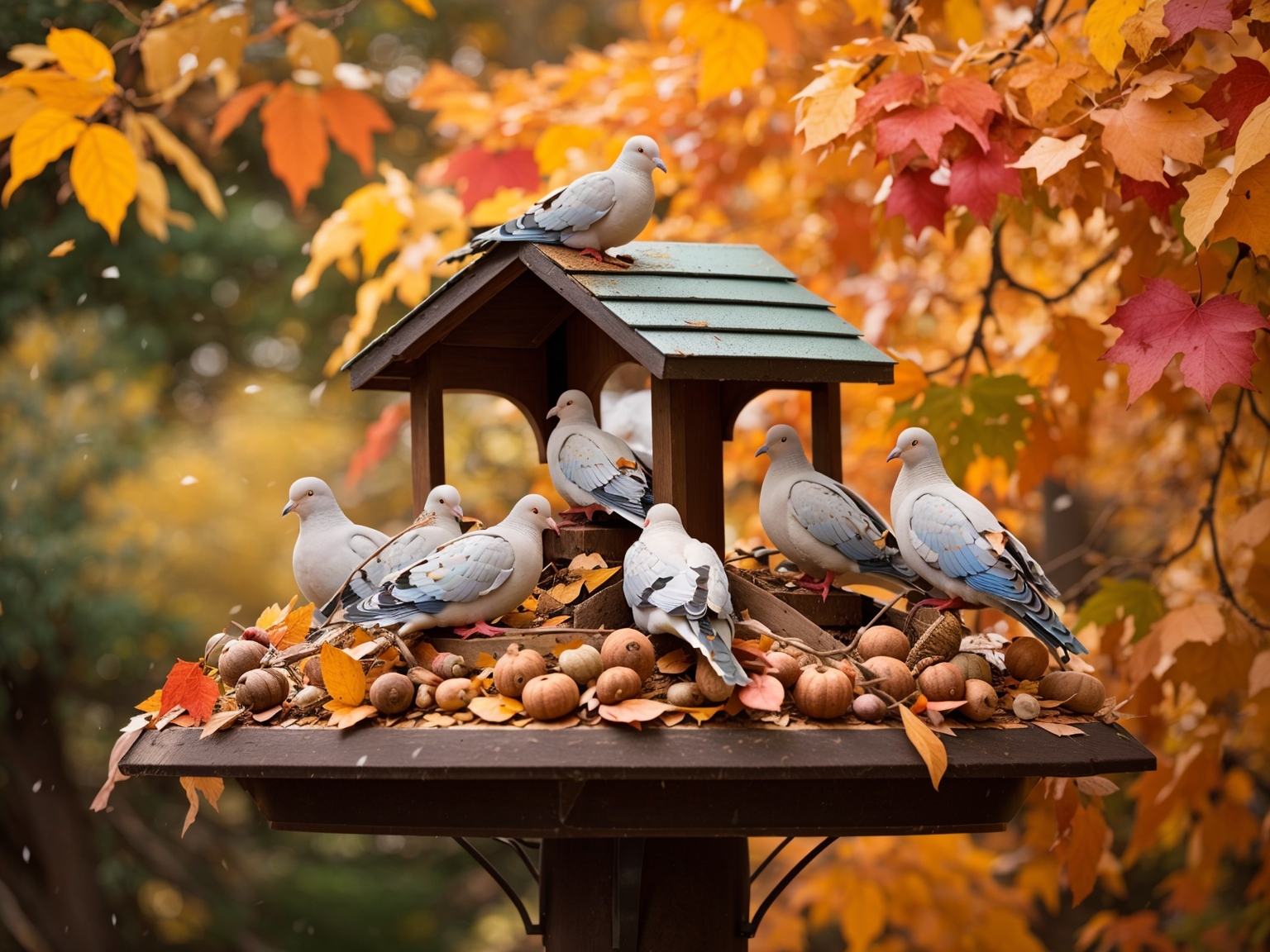Aphid Identification: What Do They Really Look Like?
Getting up close and personal with aphids reveals a world of tiny pests that can wreak havoc on your plants. These minuscule insects, often just a speck to the naked eye, are more than meets the initial glance. You’re about to dive into the nitty-gritty of their appearance, so you can spot them before they become a bigger problem in your garden.
You’ll soon discover that aphids aren’t just one-size-fits-all; they come in a variety of colors and shapes. Understanding their distinctive features is key to managing these pesky invaders. Stay tuned to learn how to identify aphids with ease and protect your plants from their clutches.
What Are Aphids?
You might know aphids by sight rather than name. These tiny pests, often found in clusters, are notorious for wreaking havoc on your garden. But what exactly are they? Aphids are small, sap-sucking insects that belong to the Aphidoidea family. They’re found in a multitude of environments, thriving on virtually any plant by feeding on its juices. This ability to adapt has made them a widespread issue for gardeners and farmers.
These pests typically measure between 1 to 10 millimeters and can be identified by their pear-shaped bodies. They might sport a range of colors, from green and yellow to pink or black, depending on their species and diet. Notable features include two short tubes, known as cornicles, protruding from their hind end—a unique characteristic among plant-feeding insects.
In terms of reproduction, aphids are prolific breeders. Under optimal conditions, they can reproduce rapidly, with females giving birth to live offspring instead of laying eggs. This quick reproductive cycle makes it challenging to control their populations once they’ve settled into your garden.
Recognizing infested plants is often done by spotting the aphids themselves or identifying the damage they cause—curled, yellowing leaves and a sticky residue known as honeydew. This honeydew can lead to sooty mold growth, adding to the plant’s distress. By sucking on plant fluids, aphids deprive plants of essential nutrients, potentially transmitting plant viruses in the process.
Treating an aphid infestation involves a multi-step approach. You can start with natural predators like ladybugs or apply organic insecticidal soaps. For more severe cases, chemical options may be necessary, though they should be used with caution to avoid harming beneficial insects. Regularly monitoring your plants and introducing preventative measures is key to keeping these pests at bay.
The Colors of Aphids
When you’re inspecting your plants for these tiny pests, you might be surprised to learn that aphids aren’t just green. They can actually sport a variety of colors. This color variation often depends on their species, the plants they feed on, and even the time of year.
Aphids can be:
- Green, blending seamlessly with foliage
- Black, which is common in the bean aphid
- Yellow, often found on milkweed
- Gray, as seen in the woolly apple aphid
- Pink, like the rose aphid
- Blue, although rare and usually due to genetic mutation
These different hues can make them difficult to spot, especially when they’re nestled snugly into your garden’s greenery. If you’re specifically looking for these invaders, check the undersides of leaves and the joints of stems for better chances of detection.
Understanding their coloration helps in identifying the type of infestation. For example, black aphids on your bean plants might indicate a bean aphid problem, while yellow clusters on milkweed could point toward milkweed aphids. Are your roses suffering? Look for tiny pink pests.
The most fascinating aspect of aphid colors is the reason behind their various shades. Some researchers suggest that aphids’ colors can offer camouflage or warn predators of their less-than-tasty flavor. Moreover, certain colors might even have a role in temperature regulation, reflecting or absorbing heat which is vital for their survival.
As you keep an eye out for aphids, remember that their color is more than just aesthetic. It’s a survival tool that makes identifying and managing them all the more challenging. Arm yourself with knowledge and perhaps a hand lens to get a closer look. Once you know what you’re dealing with, you’re better positioned to take effective action to protect your plants.
The Shapes of Aphids
As you delve deeper into understanding aphids, it’s crucial to visualize not just their color but their form as well. Aphids aren’t uniform in shape; their bodies can vary significantly depending on the species. Typically, these pests possess a pear-shaped body with long antennae and legs that appear delicate. Sucking mouthparts, technically known as stylets, enable them to pierce plant tissues and extract the vital sap they need for survival.
The size of aphids is another distinguishing feature you should be aware of. They are generally quite small, ranging from 1 to 10 millimeters in length. When inspecting plants for these insects, you’ll often find that younger aphids, called nymphs, are smaller and can be overlooked due to their size.
Observing an aphid’s body closely, you might notice two tube-like structures, called cornicles, projecting backwards from the end of their abdomen. These are unique to aphids and serve as a defensive mechanism, releasing a waxy substance when the insect feels threatened.
Aphid species can differ greatly in terms of the structure and prominence of these cornicles. Some may be long and prominent, while others may have them so reduced they’re almost invisible to the naked eye.
In terms of mobility, most aphids are wingless for the majority of their life cycle. However, when populations become crowded or the plant quality deteriorates, a generation may develop wings to disperse and find new host plants. These winged aphids have a slightly different body shape to support their new flying ability, with elongated thoraxes and lighter bodies to aid in flight.
When you’re checking your plants for these invaders, remember these identifying features:
- Pear-shaped body
- Long antennae
- Sucking mouthparts
- Small size (1 to 10 millimeters)
- Cornicles on the posterior end
- Possibility of winged forms
Being equipped with this knowledge not only helps in identification but also prepares you for effective intervention should you find these pests lurking among your greenery. Keep an eye out for irregular plant growth or a sticky residue known as honeydew, as these can be telltale signs of an aphid infestation.
Distinctive Features of Aphids
In your quest to identify aphids, pay close attention to some of their standout characteristics. Pear-shaped and often green, aphids have distinct bodily features that set them apart from other garden pests.
Long Antennae and legs protrude from their bodies, giving them a rather alert appearance. But it’s not just their looks that make these critters unique; their Sucking Mouthparts, known as stylets, enable them to feed on plant sap. This feeding style is central to both their survival and the damage they cause to plants.
Look for Cornicles, the two tube-like structures on their rear. Depending on the species, these can be prominent or nearly invisible. While you might wonder what purpose they serve, it’s worth noting that cornicles secrete defensive substances to deter predators – a survival tactic in the insect world.
Another aspect to keep an eye on is whether the aphids sport wings. While predominantly wingless, some aphids can develop wings when it’s time to seek out new host plants. This ability to disperse helps aphids colonize an array of vegetation.
When inspecting your plants:
- Search for small, soft-bodied insects clustered on new growth or under leaves
- Check for variations in color as aphids can be green, black, brown, or even pink
- Notice the damage – curled, yellowed, or distorted leaves can point to an aphid issue
Understanding these features lets you not just spot an aphid but also provides insights into their behavior and impact on your garden. Keep these details in mind when surveying your plants – they’ll help you distinguish aphids from other pests and act accordingly.
Identifying Aphids in Your Garden
You’ve learned aphids are tiny, but spotting them in your garden takes a keen eye. To start, check typically crowded spots like new growths or the undersides of leaves. Here, aphids love to cluster, establishing their feeding grounds. The signs of an aphid infestation aren’t always from seeing the bugs themselves. Instead, look for tell-tale damage on plants—discoloration, leaf curling, and stunted growth.
Remember their pear-shaped bodies and varied colors when you’re inspecting your plants. Colors can range from green, black, brown, to even pink. Having wings or not helps distinguish between species; the winged aphids usually appear when the colony needs to relocate for more food or space. So, if you spot winged insects among the clusters, it’s likely you’re seeing a colony on the move.
Here’s what to keep an eye out for:
- Clusters of small, soft-bodied insects
- Damage like curled or yellowed leaves
- Sticky residue, known as honeydew, left on leaves or beneath the plant
In managing aphids, natural predators like ladybugs and lacewings are your friends. Introducing or attracting these beneficial insects can help control aphid numbers naturally. For smaller infestations, a strong stream of water can dislodge the pests from your plants. Insecticidal soaps or neem oil applications are a go-to, directly targeting aphids without harsh chemicals.
Monitoring your plants regularly will give you the upper hand in dealing with aphids. Be proactive in your approach; as soon as you see signs of damage or detect aphid activity, take action. With a routine check, you can stop an infestation before it takes a toll on your beloved garden.
Conclusion
Recognizing aphids and their signs of infestation is key to protecting your garden. Armed with the knowledge of where to look and what to look for you’re now better equipped to spot these tiny pests before they cause significant damage. Remember that early detection and prompt action can make all the difference. Keep an eye on those susceptible spots and don’t hesitate to employ natural predators or safe control methods to keep aphid populations in check. With vigilance and the right approach your garden will continue to thrive aphid-free.
- What Makes a Good Halloween Haunted Yard: Tips for a Spooky and Fun Outdoor Experience - October 27, 2025
- Where Can I Sell Flowers From Home? Top Places to Start Your Floral Business Today - October 27, 2025
- When Is the Best Season to Sell Outdoor Furniture in the US? Ultimate Seasonal Guide - October 26, 2025




